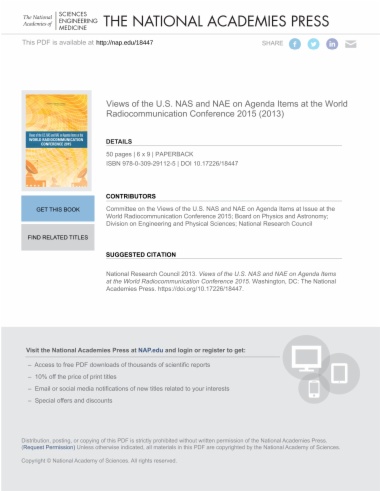

The World Radiocommunication Conference (WRC) is a meeting of official delegations from over 140 nations and is organized by the International Telecommunication Union (ITU). Delegates meet every few years to negotiate proposals to changes in international radio spectrum regulations; changes that would be enforced by the ITU internationally if approved. Proposals are brought up during a WRC and then negotiated at the next WRC. The time in between each WRC allows for national governments to work internally and with their regional counterparts to develop a consensus position on each proposal. The consensus position can then be presented at the next WRC.
Each proposal is referred to as an agenda item and agenda items are specific and propose narrow yet potentially substantial changes to the use of the spectrum that can have significant impact on its users. Most agenda items support the active use of the spectrum, so it is important for vulnerable, passive services to voice their concerns about potentially adverse effects on their operations. Two U.S. passive services, the passive Radio Astronomy Service (RAS) and the Earth Exploration-Satellite Service (EESS), provide scientific observations of the universe and Earth through the use of advanced receiver technology with extreme sensitivity and the employment of complex noise reduction algorithms. Even with such technology, RAS and EESS are seriously adversely affected by what most active services would consider extremely low noise levels.
Views of the U.S. NAS and NAE on Agenda Items at Issue at the World Radiocommunication Conference 2015 present the NAS and NAE\'s views on agenda items that affect RAS and EESS. This report includes a list of each agenda item, how it affects the programs, and the committee\'s recommendations.